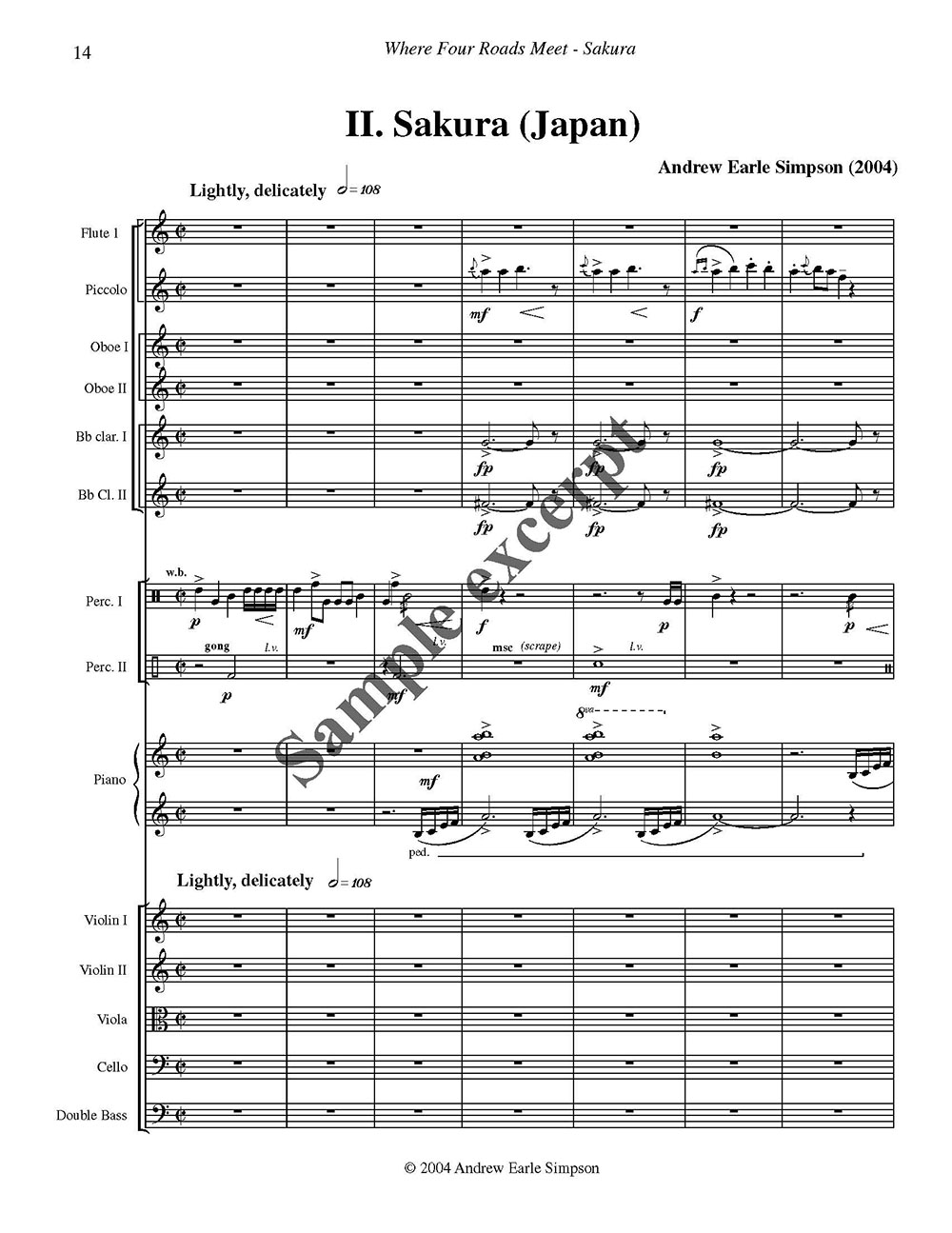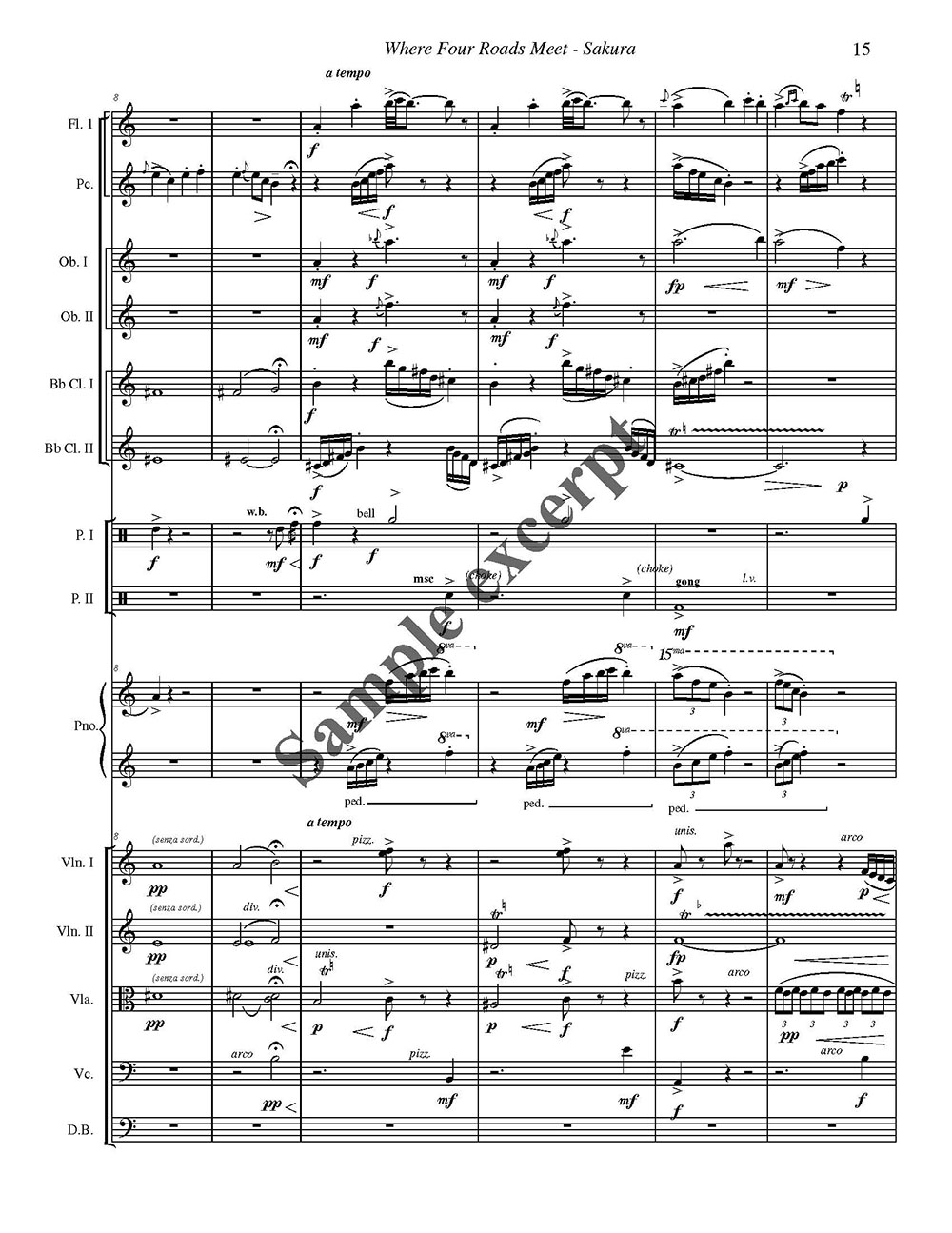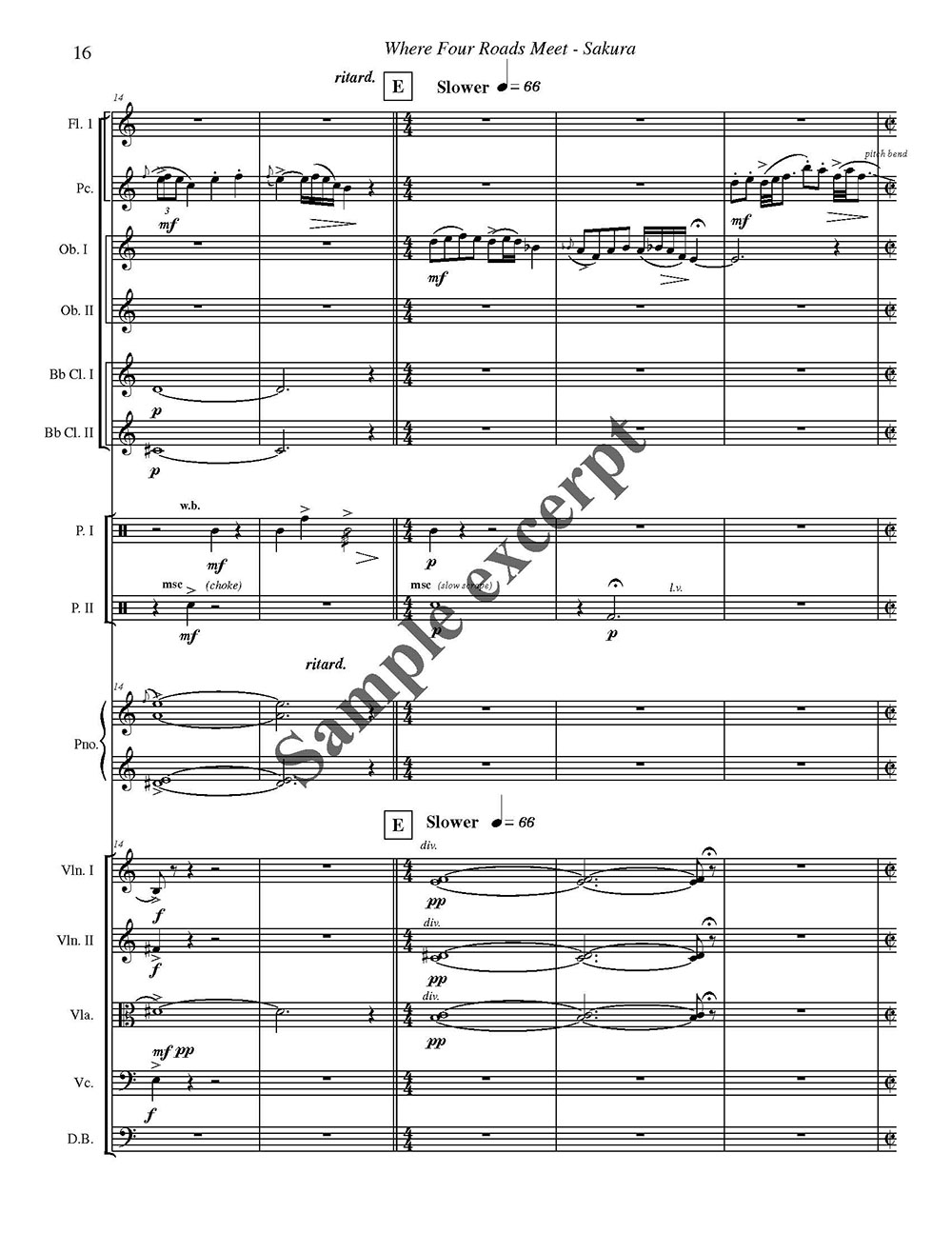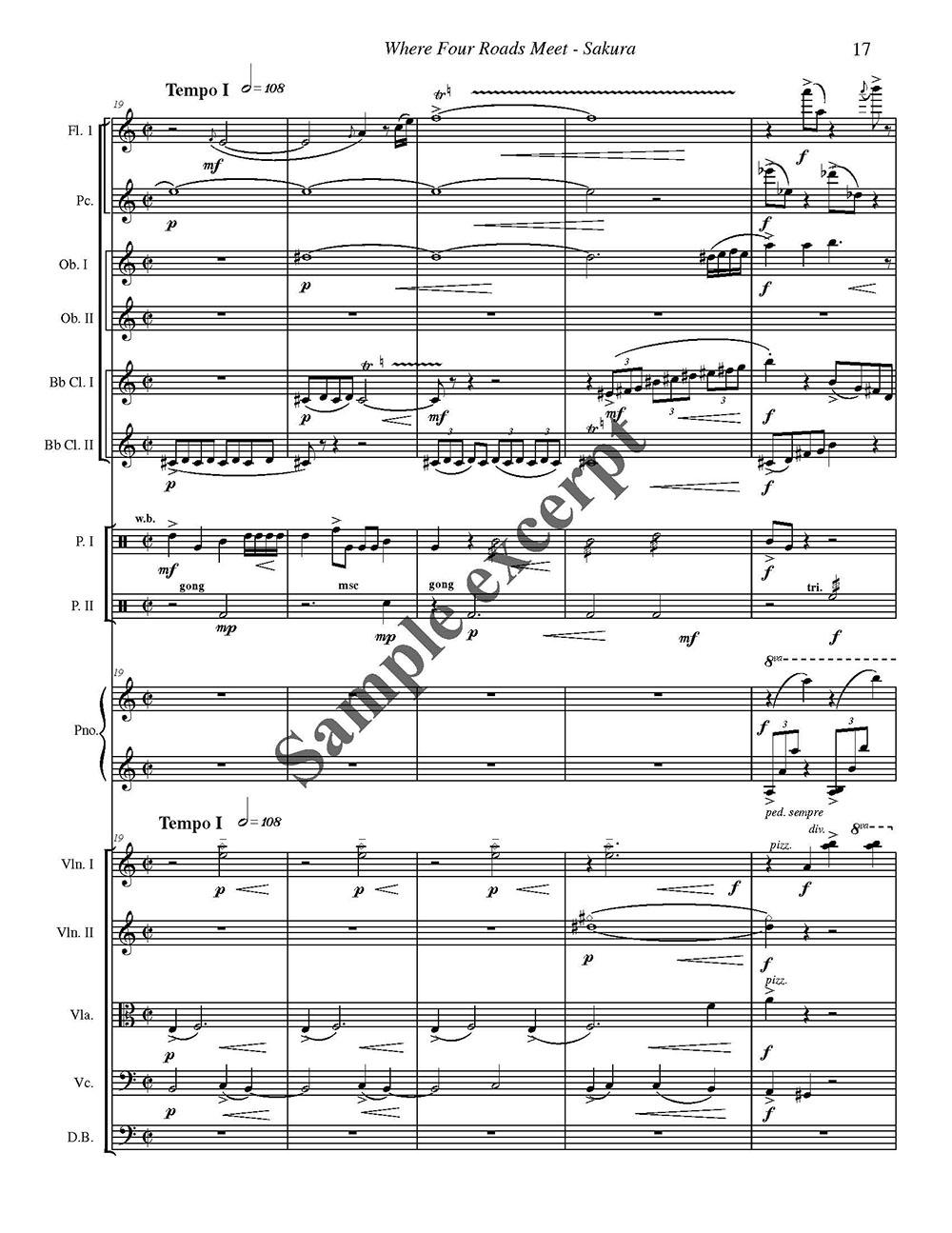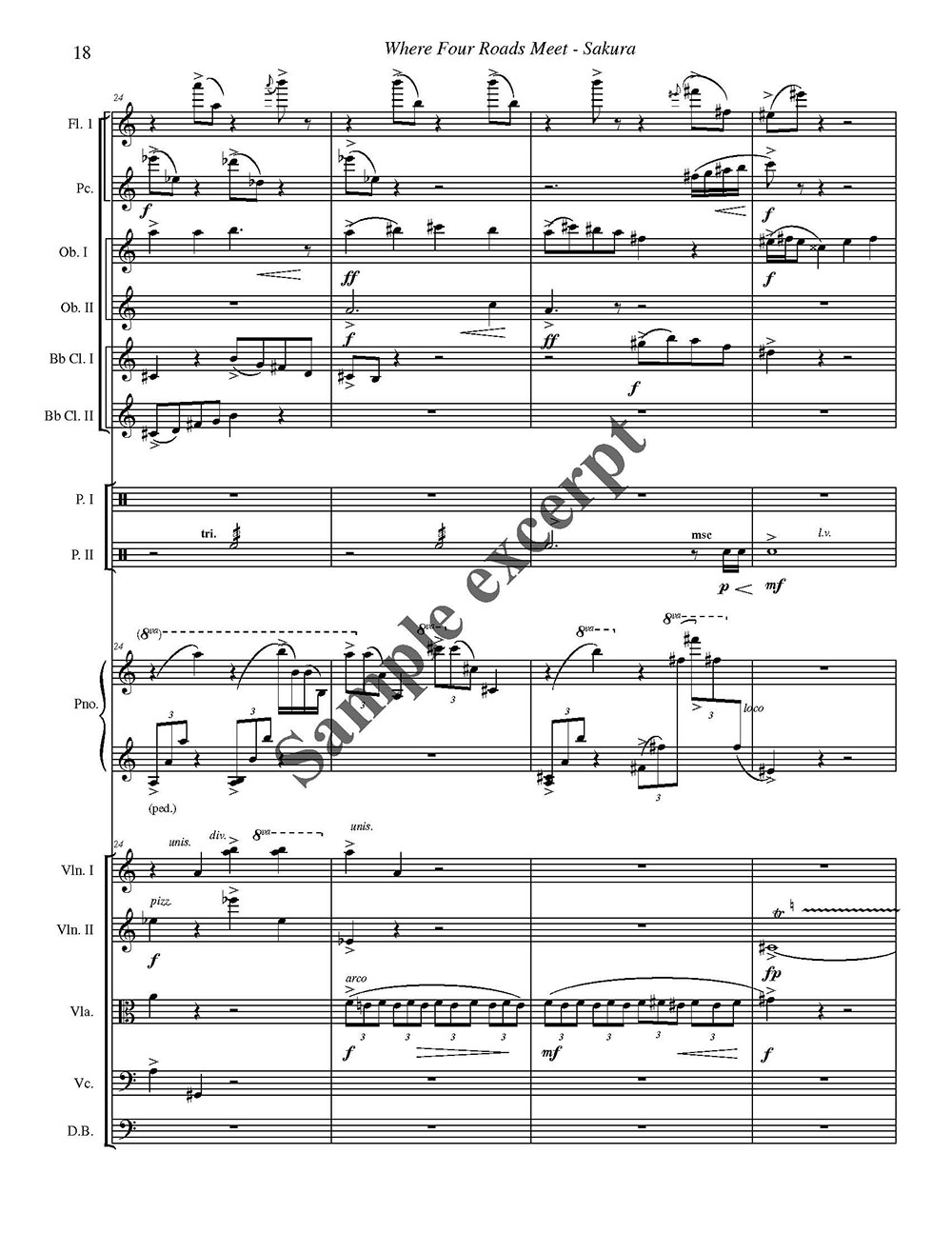Where Four Roads Meet (2004)
Asian Folk Song Variations for Chamber Orchestra, 14 minutes
Instrumentation
2220/0000/2 perc/zheng or hp/solo vn/strings
Premiere
Commissioned by the Asian-American Music Society (Washington, DC), this four-movement work is a fantasy on three Asian folk songs: Jasmine Flower (China), Sakura (Japan), and Arirang (Korea). The three tunes are combined in the exuberant finale. It was premiered at the Kennedy Center’s Terrace Theatre in May 2004 (Samuel Bill, conductor)
Movements
I. Jasmine Flower (China)
II. Sakura (Japan)
III. Arirang (Korea)
IV. Finale
Program Notes
The Asian American Music Society commissioned me to compose a new work for the spring chamber music festival, based on three Asian folk songs and employing traditional Asian instruments: the title which I have given the work, Where Four Roads Meet, is descriptive of my approach to this compositional challenge.
The three tunes - "Jasmine Flower," "Sakura," and "Arirang" - come from China, Korea, and Japan respectively, each representing a distinctive cultural and artistic “road.” The fourth road represents my own outlook and experiences as an American composer of European ancestry. As such, I have inherited much of the assumptions and practice of European/American composers, and have considered these Asian tunes through that very specialized lens. Thus, this piece fuses Asian and European/American elements, preserving the distinct qualities of each folk song within the context of Western musical rhetoric. The meeting of these four cultural “roads” in a common space – the four movements of this piece – points up differences in style and musical language between the tunes, but also demonstrates the uncanny kinships which all folk music possesses.
The instrumentation of Where Four Roads Meet combines Western with traditional Asian instruments: the 2 flutes (flute 2 doubling piccolo), 2 oboes (oboe 2 doubling English Horn), 2 clarinets, piano and strings are joined by the Chinese zheng and Western and Asian percussion instruments.
Where Four Roads Meet is subtitled “variations” for chamber orchestra, although it is less a traditional set of variations than a distinctive setting of each of the three folk songs with a finale. When Mira Yang presented me with these folk melodies, I did not know the words to the songs, and still do not know them; as I proceeded to compose the piece, I decided not to discover the words and the meaning of the songs’ texts, in order to be able to consider these melodies purely as music, and therefore as a means of erasing any cultural and language barriers. I sought what appeared to be the essential character of each tune, and explore and develop that character musically. The four movements of this piece, then, are set somewhat in the manner of a traditional Western symphony: opening movement, fast scherzo, slow movement, fast finale.
The first movement sets the Chinese melody “Jasmine Flower.” A solo flute, accompanied by the zheng, opens the work quietly. Over a repeating pattern in the percussion, the folk melody is first heard in the strings, which play a large coloristic and melodic role in the movement.
The serenity of the first movement is contrasted by the second, based on “Sakura,” a celebrated Japanese melody. “Sakura” is distinct from the other two folk melodies; while all three are based on pentatonic (i.e., five-note) musical scales, “Sakura” has different intervals within that scale, thus lending it a very different character. The tune could be interpreted as a very delicate miniature (“Sakura” is “cherry blossom”); however, its nature also suggests a more scherzo-like treatment, in fast tempo. This movement is highly coloristic, and subjects the tune to a variety of fragmentation and development. The piano has a brilliant and sparkling presence in this movement.
“Arirang,” the melody set in the piece’s “Adagio,” or slow, movement, is the only one previously known to me. As a high school trumpet player, I learned this melody through John Barnes Chance’s setting of it in his Variations on a Korean Folk Song, for concert band. Into a scene set by muted strings and zheng enters the solo English Horn, which first plays this beautiful melody. Other instruments take turns with the tune – flute, solo violin – but the English Horn returns to finish the movement alone.
The finale, subtitled “Where Four Roads Meet,” is the culmination of the previous three movements. The three folk songs are combined in this movement in unique ways, including a new “pan-theme,” first heard here, which combines elements of the three tunes into one melody. The solo piano begins the movement with a descending “cascade of cherry blossoms,” after which the “pan-theme” is heard for the first time. Following this, a steady rhythmic pulse is set by the piano and double basses and the three tunes enter and exit, in different speeds and modes, over that pulse, building gradually to a coda in which the texture becomes ever more varied and complex, and the tunes continue to interact, through three-part canon (a very Western musical device) and simple layering of melodies. The piece ends triumphantly with a flourish from the full orchestra.
—Andrew Earle Simpson
